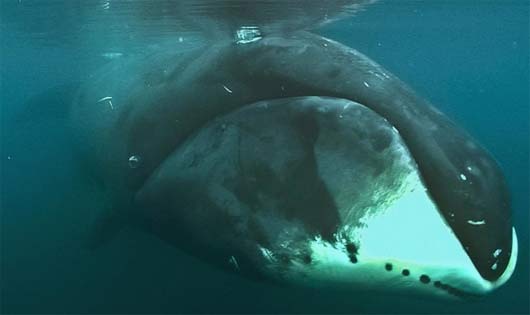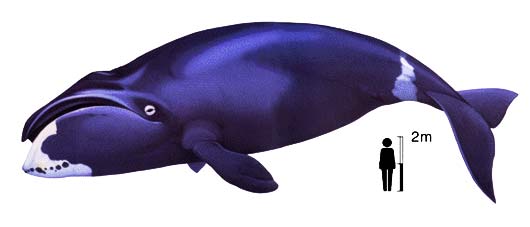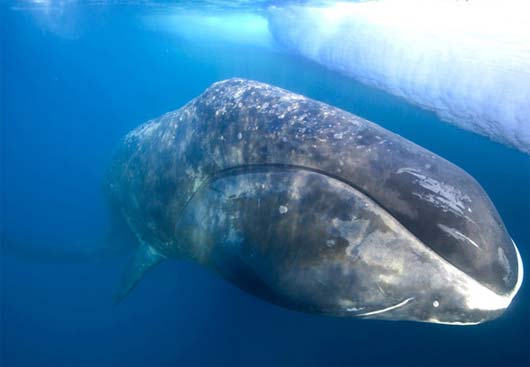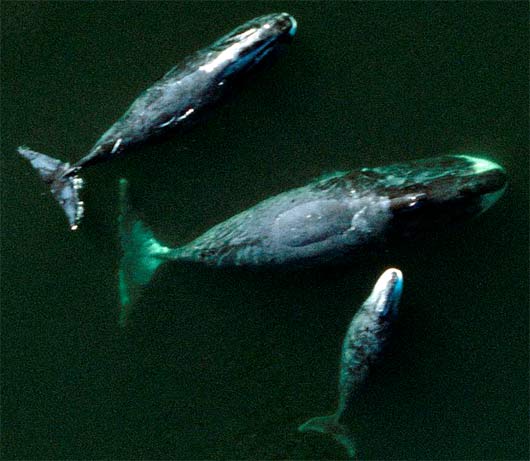Bowhead Whale – Baleen of Arctic Waters

The bowhead was named for its strongly curved jaws which resembles the shape of an archer’s bow. The species has a huge and powerful head. Eskimos say that a bowhead can break its way up through ice several feet thick. Breaking through the ice may be necessary to find some air to breath. The head represents more than one-third the length of its body. Measuring up to 65 feet (19.8 m), a very large adult could weigh more than 100 tons. This makes them medium-sized when compared to other baleen whales. The length of a newborn calf is 13 to 15 feet (4 to 5 m). The bowhead breeds in summer at the edge of Arctic ice, moving slowly southward in winter with the drifting floes. This is a very vocal whale that sings long songs while socializing, eating or traveling.


The main food source of the bowhead is crustaceans such as krill and smaller crusty creatures that they capture by filtering water through their open mouths and catch on their baleen plates. The baleen is like a set of bristles instead of teeth that is used to strain the water. It feeds sparingly during spring and fall when it is migrating. As many as 50 individuals may gather together in fall, but they will more commonly travel alone or in smaller groups of two or up to six. Unlike other whales they really don’t migrate very far south, only to the Bering Sea, and mostly stay near Arctic waters. Sometimes they will spend a little time with groups of other whale species. The world population of the bowhead, is not known exactly but was estimated in 1990 at a very low 8,000 and has more recently recovered to 25,000. This population however, is probably only some 10 percent of what the population was before whale hunting started. In the late 1800s the bowhead was the most valuable of all whales because it yielded copious amounts of oil, used as fuel in household lamps, and the finest whalebone and which was used mainly for all important corset stays. It is thought that the whales can live as long as 200 years. Some whales have been found with harpoon tips embedded in their flesh manufactured over 100 years ago. Eskimos of the Arctic region, in keeping with their cultural tradition, are still allowed to kill some 50 bowheads each summer. Besides that, the species has been protected by all the northern nations since 1935. The Eskimos hunt from skin-covered boats called umiaks, using dart guns or shoulder guns. These guns will fire a projectile that contains a bomb that explodes in the whale (that doesn’t sound like traditional hunting).

